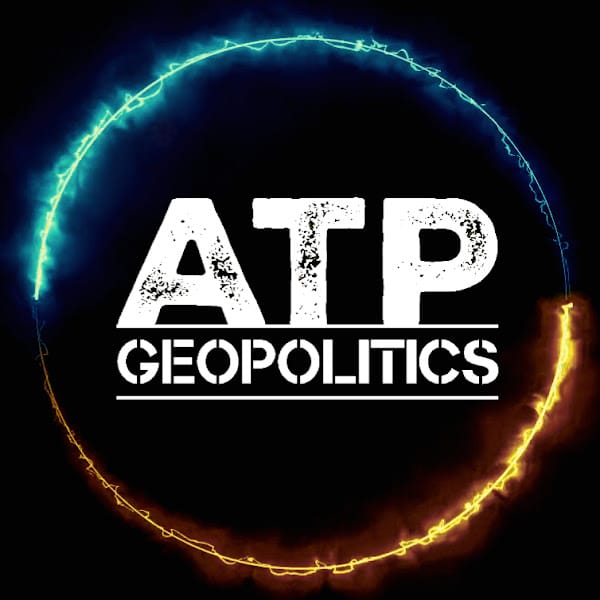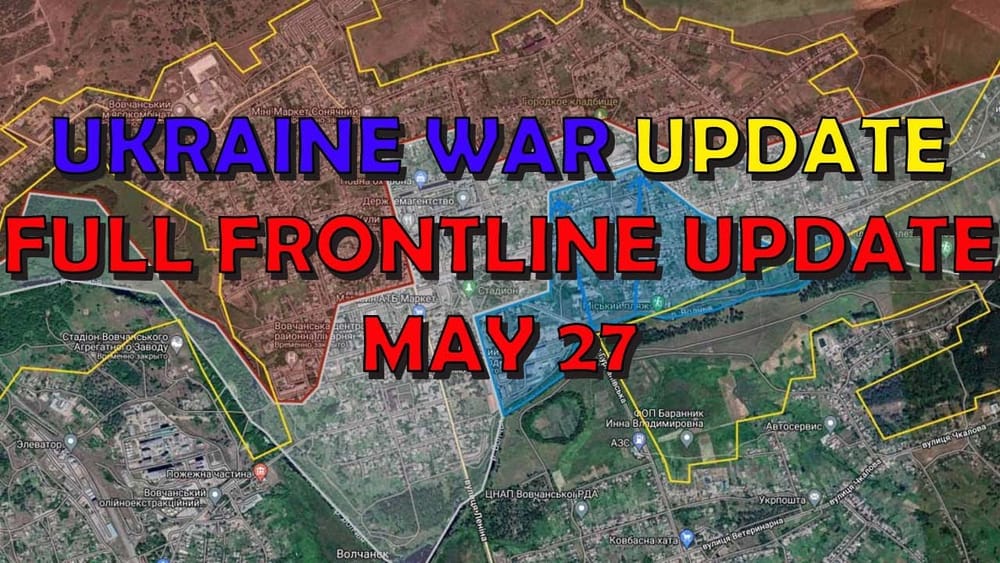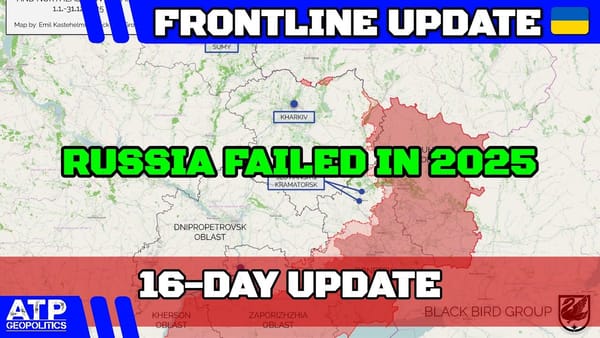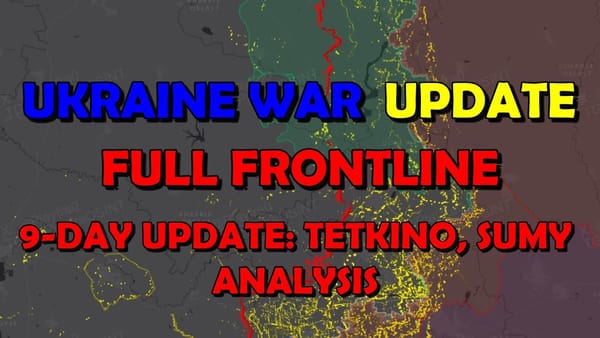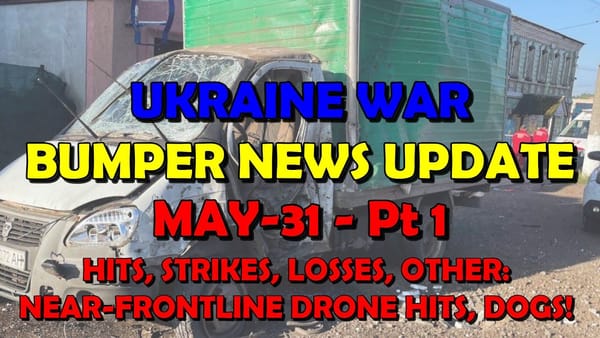Ukraine Conflict: Full Frontline Update
Table of Contents 📖
"Are the Ukrainians going to be able to take this land back militarily? It's a tough call."
Hello Team
🎦 00:00-02:31⏩
Jonathan welcomes viewers to a frontline update for 27th May 2024 and gives his usual preamble explaining the map key and the colour coding for pins and lines. He explains the different colours relate to Russian advances, Ukrainian advances and those from different map sources. He notes that there is a lot going on, but viewers should get the hang of it after a while. Jonathan apologises for sometimes getting his words muddled, attributing this to his Multiple Sclerosis.
Return to top⤴️
📍 FRONT-LINE UPDATE -🗺️ MAP LEGEND

Northern Front: Kharkiv/Vovchansk/Lipsy
🎦 02:31-12:26⏩
Jonathan starts with the Northern Front around Kharkiv, noting that the anticipated large-scale Russian incursion with 50,000 troops has not happened. He observes that there are rumours about a potential Russian attack from the Sumy Oblast with 15,000 troops, but that Ukrainian defences in that area are stronger than previously. There is speculation about whether a Russian attack in Sumy would be wise. Jonathan refers to information sent to him from military source 'Genia in Ukraine' who, two days prior to this video being published, reported an increase in Russian artillery and reconnaissance activity in Sumy Oblast. Jonathan then moves to the situation around the Lipsk and Vovchansk sectors. He refers again to information from 'Genia in Ukraine', quoting their summary of what the Russian offensive in Kharkiv Oblast had achieved in the 15 days prior. He highlights that while the Russians have made advances in some areas, these have been limited and have come at a high cost. Jonathan notes that the Russians are entrenched in some areas but Ukrainian troops have repelled attacks. The Ukrainians are receiving artillery and ammunition and are using a combination of artillery, infantry, and situational awareness across the front line to combat the Russians. He notes that the Ukrainians are using brigades differently in this area, dividing lines of responsibility rather than using the whole brigade. This is viewed by 'Genia in Ukraine' as a positive tactic, allowing for a more agile and responsive defence. They are not, however, rushing into quick, poorly prepared attacks and are prioritising inflicting losses on the enemy rather than quickly retaking territory. Jonathan provides commentary on the use of guided bombs by both sides, highlighting the high level of intensity of the fighting. He refers to footage from Getty Images of Ukrainian fighters from the 82nd Air Assault Brigade using a Striker armoured personnel carrier (APC) fitted with a Javelin anti-tank missile system to destroy a target. This highlights the use of newer Western-supplied equipment in the area. He speculates, based on 'Genia in Ukraine's' analysis, that the future plans of the Russians in the area are: to capture the ridge of dominant heights that control the border strip and the villages from Lipsy to Steritsia; to capture the city of Vovchansk and a forest with dominant heights around it; to connect the two bridgeheads from Vovchansk to Lipsy and take control of the entire border strip; and to bind and exhaust Ukrainian troops with losses, to reduce their fighting capacity, and to prevent them from being transferred to Donbas. Jonathan questions whether this Russian offensive has been a good idea, suggesting that the resources deployed may have been more effectively used elsewhere, such as in the ongoing battle for Chasiv Yar. He concludes the section by suggesting that while the Russians may have inflicted losses on the Ukrainians, they are likely taking heavier losses themselves.
Return to top⤴️
Northeastern Axis: Kupyansk/Svatove/Kreminna
🎦 12:26-21:27⏩
Moving south from Kharkiv, Jonathan turns his attention to the frontline from Kupyansk to Kreminna, noting some changes. Although there are no reported changes to the Kupyansk-Svatove area itself, Jonathan highlights claims from the Ukrainian General Staff that Russian troop activity has increased in the direction of Kupyansk. He speculates that this increased activity in the Kupyansk direction may be linked to the Russian offensive in the Kharkiv Oblast. He questions the Russian strategy of drawing Ukrainian troops away from the Kupyansk area, arguing that it would have made more strategic sense to have deployed the 50,000 troops directly to Kupyansk if their objective was to take the city. He speculates that other advantages cited, such as hitting Kharkiv with artillery or establishing a buffer zone, are secondary considerations. Moving further south, Jonathan examines the area around Krokmalne and notes gains made by Russian forces. He identifies the area as having been active for some time. He highlights advances made by the Russians west of Kislivka, along the railway line, and around the settlements of Brestove and Novoselivske. He draws attention to the fact that this is a slightly new area of advance for the Russians, further south than their previous advances in the area. Jonathan then shifts his focus to the area around Makiivka, where the Russians have made small gains near Kamazinivka. He highlights this as another area where the Russians are pushing and probing. Further south still, he examines the situation in Bilohorivka, describing it as an interesting area. He references conflicting reports from different sources regarding Russian advances in the village. He notes that pro-Russian mapper, Rybar, claims that while Russian troops have entered the centre of Bilohorivka, it is premature to talk about a full Russian capture as Ukrainian troops reportedly still hold the western hills. Jonathan draws attention to discrepancies between different mappers, highlighting Rybar's previous claims that were later retracted, suggesting that these claims may have been premature or based on incomplete information. Jonathan provides a detailed analysis of the challenges posed by the topography in the area, particularly for the Russians. He highlights the presence of a chalk pit that the Russians need to climb, drawing attention to the fact that previous attempts to do so have been repelled. He highlights the difficulties faced by the Russians in attacking uphill towards Ukrainian positions and notes that they have lost a significant amount of equipment in the process. Jonathan concludes that while it is possible the Russians could take control of Bilohorivka, it is unlikely given the challenges they face.
Return to top⤴️
Bakhmut and Chasiv Yar
🎦 21:27-23:40⏩
Shifting his attention south to the Bakhmut sector, Jonathan notes that the frontline has stabilised around Chasiv Yar over the past week. He highlights apparent gains being made by the Russians in the 'Canal Microdistrict' of Chasiv Yar, according to both Deep State Maps and Andrew Perpetua. Jonathan argues that this is significant as it suggests the Russians are making slow, grinding progress. He suggests that if all mappers agree on the Russian presence in the easternmost reaches of the Canal Microdistrict, then it's likely that this area will soon fall under Russian control. He highlights the logistical challenges faced by the Ukrainians in holding the area, noting that the canal acts as a natural barrier and many bridges across it will have been destroyed. While culverts may provide some limited access, they present challenges for supplying troops and moving heavy equipment. He concludes by pointing out that as the Russians make further gains in this area, the situation for the Ukrainians will become increasingly difficult.
Return to top⤴️
Avdiivka Frontline
🎦 23:40-26:36⏩
Moving south from Chasiv Yar, Jonathan focuses on the Avdiivka front line, noting significant activity in the northern part of the sector. He observes that Deep State Maps places the Russians advancing slightly north of Ocheretyne and that both Deep State Maps and Rybar show some tree line advances towards Novokalynove and north of Ocheretyne. These advances, while incremental, represent territorial gains for the Russians. Jonathan points out that Rybar has since revised their assessment of Russian progress west of Ocheretyne, suggesting either a lesser degree of success than initially claimed or a Ukrainian counterattack. Further south, west of Novobakhmutivka and Soledar, Jonathan identifies Russian gains according to Deep State Maps and Rybar. These gains are considered significant as they are in the direction of the settlement of Sokil. He notes, however, that there are conflicting reports regarding the situation around Soledar, with Andrew Perpetua and Deep State Maps disagreeing with Rybar's assessment. Jonathan then references Rybar's assertion that, following the capture of Umansk, the Russian army made advances north of Orlivka and along the Umansk line over the previous 48 hours. He also highlights Rybar's claims of Russian advances west of Slovyansk and east and northeast of Novoaleksandrivka, although he acknowledges that the Russians have not yet managed to enter the latter. Jonathan concludes this section by noting Rybar's claim of a successful Ukrainian counterattack along the railway line, urging caution in interpreting this information without further corroborating evidence. He suggests that Rybar sometimes attributes retreats to Ukrainian counter-attacks when in reality the Russians may never have held the territory in the first place.
Return to top⤴️
Southern Front: Velyka Novosilka, Netaylove and Solodka
🎦 26:36-28:40⏩
Continuing south, Jonathan examines the situation around Velyka Novosilka, noting Russian advances west of Pervomaiske. Deep State Maps corroborates this assessment, indicating that the enemy has occupied Netaylove. Jonathan observes that the Russians are attempting to push as far west as possible in this sector, with the aim of reaching Prokofivka. Moving further south to the area around Solodka, Jonathan identifies additional Russian gains, this time in the direction of Voivodine. He points out that this advance is strategically significant as it brings the Russians closer to the road connecting Vuhledar, via Voivodine, to Kostyantynivka. He notes that Deep State Maps reports small Russian advances west of Novomykilka, just south of Paraskoviivka, and suggests that the Russians are aiming to take control of Kostyantynivka to cut off the road south of Voivodine. He explains that this would enable the Russians to attack Vuhledar from the north, a potentially more favourable position given the heavy losses they have sustained attempting to attack from the south.
Return to top⤴️
Southern Front: Velyka Novosilka
🎦 28:40-30:15⏩
Jonathan returns to Velyka Novosilka, where the Russians have had success around Urozhayne and Prechystivka. Rybar reports the Russians have gained control of additional streets in Urozhayne, while Andrew Perpetua indicates substantial Russian advances in the area, confirming earlier reports from Rybar and Deep State Maps. Jonathan highlights Russian gains in the fields west of Staromlynivka and cites Rybar, who states that the Ukrainian army has retreated from large parts of Staromlynivka, with the Russians now controlling around 70% of the settlement. He notes Andrew Perpetua's corroboration of Russian gains in the rural area. While acknowledging these gains, Jonathan downplays their strategic importance, arguing that the area was retaken by Ukraine in their May counteroffensive and doesn't hold significant operational value. He expresses a preference for seeing the Ukrainians cede this territory rather than lose ground in more critical sectors.
Return to top⤴️
Southern Front: Robotyne and Dnipro
🎦 30:15-35:42⏩
Jonathan concludes the frontline update with the Southern Front, reporting no changes in Robotyne or Dnipro. He mentions that contrary to Rybar's previous reports, there has been no change in the situation west of Kinski Rozdory. There is confusion about the situation in Krenka, with conflicting reports suggesting that Ukrainian forces may have withdrawn across the river, potentially to reinforce positions in Kharkiv. Jonathan observes that the Russians have made considerable gains across numerous areas, attributing their success to a combination of attrition and Ukrainian manpower shortages. He believes that the Russians are approaching culmination, lacking the strength and depth for further significant advances. He stresses the high cost of their gains, achieved through extensive use of aviation and artillery due to the limited manpower available to them. Jonathan transitions into an analysis of the overall strategic situation, highlighting the challenges faced by Ukraine due to their lack of manpower, which he sees as a crucial factor in assessing their chances of success. He contends that Ukraine needs a significant increase in manpower to effectively challenge the entrenched Russian positions. Jonathan questions the assessments of some military analysts who propose ambitious Ukrainian offensives, arguing that such operations would require a far greater number of troops than Ukraine currently possesses. While acknowledging that Ukraine is mobilizing, he remains sceptical about their ability to recapture large swathes of territory without first addressing their manpower deficit. He suggests that achieving air superiority would be a game-changer for Ukraine, allowing them to strike Russian front lines and logistical hubs with impunity. However, he acknowledges the considerable challenges in achieving this, let alone air supremacy. Jonathan expresses doubt about Ukraine's ability to launch a successful combined arms manoeuvre offensive to dislodge the Russians, believing that such an operation would only be feasible if the Russians were already in a significantly weakened state, perhaps due to prolonged attrition or successful deep strikes on critical infrastructure. He proposes an alternative strategy for Ukraine, focusing on a sustained campaign of attrition against Russian forces. This would involve targeting the Black Sea Fleet in Novorossiysk, rendering Crimea untenable, continuing long-range strikes on Russian territory, and simultaneously training and equipping a large Ukrainian force with Western support. Jonathan speculates that such a strategy, if pursued for a sustained period (6+ months), could create the conditions for a Russian collapse, either through a coup, Putin's failing health, or internal unrest, paving the way for a Ukrainian military victory. He concedes, however, that an internal uprising within Russia is the least likely scenario. Jonathan emphasizes that this approach differs significantly from a decisive Ukrainian victory on the battlefield. He believes that Ukraine's best hope lies in creating a situation where Russia is compelled to withdraw, rather than decisively defeating them in a conventional offensive.
Return to top⤴️
Wrap up
🎦 35:42-35:46⏩
Jonathan concludes by encouraging viewers to share their thoughts on his analysis and thanks them for watching.
Return to top⤴️
